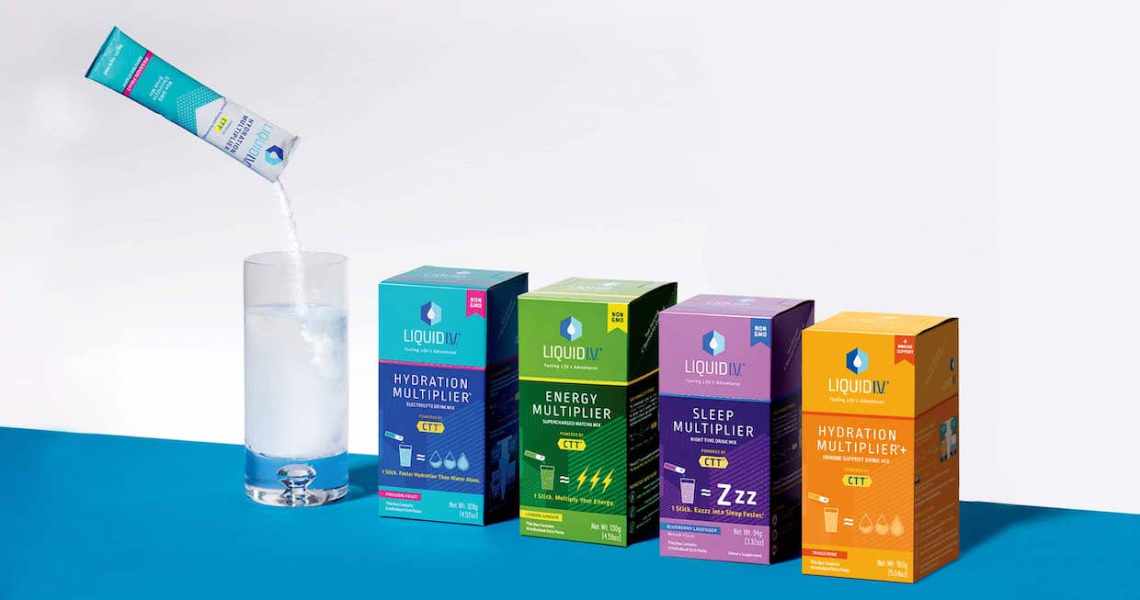As the wellness industry grows, more companies are looking ahead to how they can continue fueling that growth.
In the case of Unilever, that strategy included bundling its seven vitamins, mineral and supplement brands into one umbrella in 2022. Jostein Solheim, CEO of Health & Wellbeing Collective, leads this unit of Unilever. Health & Wellbeing Collective includes household brands like beverage supplement Liquid I.V., Olly vitamins and Nutrafol, with all seven brands comprising over $1 billion in annual sales.
Solheim shared with Glossy his thoughts on the vitamins, minerals and supplements category, including the necessary regulations, the global opportunities and the evolution he expects.
What industry shifts transpired to lead to the current wellness boom?
“People are taking more responsibility and more control over their own health. It’s no longer being outsourced to doctors. We saw that during the pandemic a lot, in terms of very active debate and discourse around health. People rely on friends and family, social media and their own research to build a more active agency around their health. That is the underlying fundamental habit that then leads people to seek out solutions that support their specific health journeys and/or beauty objectives. Science is also quickly evolving and is being better communicated with the public.”
How do you foresee the VMS category evolving?
“There are so many underlying, fundamentally positive trends that are driving the industry. The underlying trend is that health is no longer about the absence of disease, so there is a whole area around benefit-led personalization. As people get savvier and access diagnostic tools, how do we meet them where they are? Nutrafol, as an example, comes from the realization and understanding that a lot of your hair health comes from [internal health], and that you can take very decisive and specific steps to support your hair health from within. Additionally, [category evolution] revolves around the conscious consumer. People have become a bit cynical around many things, but we are seeing very strong engagement around purpose and missions, and find that when we truly support communities and issues, people gather around that in a powerful way.”
How big of an opportunity is China right now?
“We have our Olly and kids multivitamin SmartyPants businesses in China [operating] via cross-border e-commerce. We also launched Nutrafol on May 24. China is the second largest VMS market after the U.S., so it’s relatively well-developed. India is also starting to come through as a traditional VMS market. But if you look at a lot of the insights and things that we are now proving out with clinical studies, they’re really anchored in Ayurvedic practices from India and ancient [Traditional] Chinese Medicine. There are similar needs [compared to the U.S.], and there is an openness in China, as well, to discuss health and solutions. … The need states in the United States are much more developed than in China, and other need states in China are very large [compared to the U.S.]. They’re not exactly the same; there are a lot of joint and bone health needs and digestive health needs in both places, but that’s very active in China.”
How do you stand to compete with China’s long history of Traditional Chinese Medicine?
“We use a lot of the active ingredients and logic from Chinese medicine and then combine it and simplify it in some ways. Olly is the best example of a business … that has simplified ingredients [into verticals] like beauty, skin, sleep and stress. That’s what we’re sort of bringing to VMS — taking a complex issue and simplifying it for the consumer, but then still having the underpinning and the connection in China.”
Do you support legislation of the VMS category or the FDA regulating it?
“In general, I believe that everything we can do as an industry to raise the bar and build consumer and user trust is important. We embrace that. When it comes to the technicalities of how we do that, I think it’s a combination of industry forums, regulatory framework, [industry] standards, et cetera. In the U.S., at the moment, we have a reasonable balance. What we see in some [other] markets is that innovation and learning are stifled because the regulatory framework is so tight, even around new active ingredients. Ashwagandha is an example that’s available in the U.S. [but not elsewhere].”




